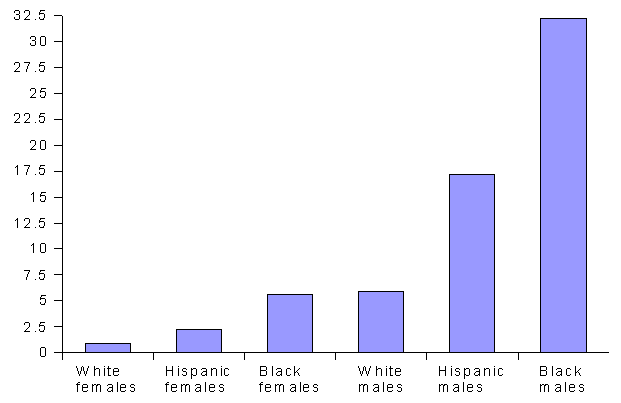Blacks Cause Crime
Poverty/Crime Excuse Smashed
A scientific study of rich and poor black
and white youth in the US has definitively smashed the excuse used by
nonwhite apologists that poverty “causes” crime.
The study, published in the March 2016 edition of the Race and Social Problems journal, found that poor black males were nearly four times more likely to commit crime than poor white males, and that poor Hispanics were not far behind.
The results showed, said the paper, that the “chances of incarceration in America are always higher for blacks than for whites or Hispanics, regardless of their level of wealth.”
Titled “Race,
Wealth and Incarceration: Results from the National Longitudinal Survey of
Youth,” the paper was prepared by Khaing Zaw, Statistical Research
Associate at Duke University; Darrick Hamilton from The New School
Department of Economics, New York; and William Darity, Professor Public
Policy, African and African American Studies, and Economics, at Duke
University.
Zaw is Chinese, and Hamilton and Darity are black, so there can be no credence given to accusations of “white bias” in this study.
Although obviously set up with the intention of proving some sort of “discrimination,” the study was instead left with an inexplicable—for them, at least—fact: that when all socioeconomic factors are equal, nonwhites still have significantly higher crime rates than whites.
It is a searing indictment on the prized liberal core belief that higher nonwhite crime rates are always the result of “poverty” brought about by “white racism.”
The study analyzed data from the US Bureau of Labor’s 1979 National Longitudinal Study of Youth, which was a longitudinal project that followed the lives of a sample of American youth born between 1957–64. It originally included 12,686 respondents ages 14–22 when first interviewed in 1979; after two subsamples were dropped, 9,964 respondents remain in the eligible samples.
The study asked the participants about their assets and debts, and interviewers also noted their type of residence, including whether they were in a jail or prison.
Participants were then grouped by race and their household wealth, and researchers then went back through the data to see how many people in each group were arrested and jailed for criminal activity. The study excluded all those who were only briefly locked up, as opposed to full incarceration.
The “poverty” graduations were divided into ten groups of ten percentiles, broken up by income levels (Table 6 of the paper).
The results found that about 2.7 percent of the poorest white young males ultimately went to prison, while 10.47 percent of black males in that category went to prison, and 7.16 percent of Hispanics.
In the next income category up, 20.48 percent of blacks went to prison, as opposed to 3.13 percent of whites, and 14.56 percent of Hispanics.
The disparity remains constant throughout the entire range, with the percentage of whites being imprisoned never rising about 6.36 percent.
Only the very wealthiest black youth—those whose household wealth exceeded $69,000 in 2012 dollars—had a better chance of avoiding prison than the poorest white youth. Among black young people in this group, 2.4 percent were incarcerated.
As the study concluded:
Between races, we find that at low levels of wealth both blacks and Hispanics still had a higher incarceration rate than whites. At higher levels of wealth at the baseline, although the black-white incarceration disparity was reduced for males, it was not eliminated.
After trying to explain this enduring gap by “differential exposure to discrimination,” and other clearly made-up factors, the study then admits that:
We do observe that for Hispanic males starting with higher levels of wealth, odds of incarceration are similar to those of white males at comparable wealth levels. Why Hispanic males experience this convergence but not black males, we leave to further study.
In other words, the study is at a loss to explain why, given the same socioeconomic circumstances, there is a difference in the incarceration rates between Hispanics and blacks.
In its introduction, the paper provides a number of important background facts related to the topic:
Department of Justice estimates indicate that one in three black men born in 2001 can expect to be incarcerated in the course of their lifetime. In comparison, the rate for Hispanic males is one in six and for white males, one in seventeen.
Mass incarceration in the USA disproportionately affects blacks. Among men born between 1965 and 1969, 3 percent of whites and 20 percent of blacks had served time in prison by their early thirties.
As the Washington Post noted in its report on the study:
“In criminal justice, though, you can’t just explain away the disproportionate rates at which black and Hispanic youths end up in prison by pointing out that many people of color did not grow up with the same economic advantages as their white peers.”
